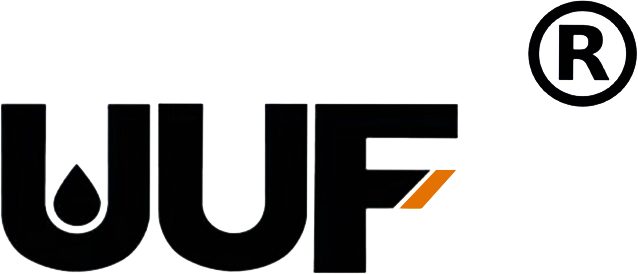Common Problems with Rubber O Rings and Effective Solutions
Time:
2025-07-14
Common Problems with Rubber O Rings and Effective Solutions Rubber O rings are essential components in a multitude of industrial applications, providing crucial sealing capabilities that prevent leaks, maintain pressure, and enhance overall system performance. However, like any mechanical part, O rings can encounter various issues that compromise their effectiveness. Understanding these common pro
Common Problems with Rubber O Rings and Effective Solutions
Rubber O rings are essential components in a multitude of industrial applications, providing crucial sealing capabilities that prevent leaks, maintain pressure, and enhance overall system performance. However, like any mechanical part, O rings can encounter various issues that compromise their effectiveness. Understanding these common problems and knowing how to solve them can save time, money, and resources in the long run.
Table of Contents
- 1. Introduction to Rubber O Rings
- 2. Common Issues with Rubber O Rings
- 2.1. Wear and Tear
- 2.2. Improper Installation
- 2.3. Chemical Exposure
- 2.4. Temperature Variations
- 2.5. Moisture Absorption
- 3. How to Solve Common Problems with Rubber O Rings
- 3.1. Implementing Preventative Maintenance
- 3.2. Correct Installation Techniques
- 3.3. Choosing the Right Material
- 3.4. Managing Temperature Effects
- 3.5. Monitoring Chemical Exposure
- 4. Frequently Asked Questions
- 5. Conclusion
1. Introduction to Rubber O Rings
Rubber O rings are circular seals made from elastomeric materials, commonly used in various industries such as automotive, aerospace, and manufacturing. Their primary function is to create a reliable seal between two surfaces, preventing fluid or gas leakage. The versatility of rubber O rings makes them ideal for applications in dynamic and static setups. However, when they start to experience problems, the consequences can range from minor leaks to significant system failures.
2. Common Issues with Rubber O Rings
Understanding the common issues that can plague rubber O rings is crucial for maintaining optimal performance. Below are some of the most prevalent problems:
2.1. Wear and Tear
Over time, rubber O rings can experience physical degradation due to continuous use. Factors such as pressure, temperature fluctuations, and mechanical stress contribute to wear and tear, resulting in diminished sealing capabilities.
2.2. Improper Installation
Incorrect installation is one of the leading causes of O ring failure. If an O ring is twisted or stretched beyond its limits during installation, it can result in leaks or complete failure of the seal.
2.3. Chemical Exposure
Rubber O rings are susceptible to damage from various chemicals, including oils, solvents, and fuels. Exposure to incompatible substances can lead to chemical degradation, resulting in cracks, swelling, or brittleness.
2.4. Temperature Variations
Extreme temperature fluctuations can adversely affect rubber O rings. High temperatures can cause rubber to harden and lose flexibility, while low temperatures can make the material brittle. Both scenarios can result in seal failure.
2.5. Moisture Absorption
Certain rubber materials can absorb moisture, which may lead to changes in dimensions and a subsequent loss of sealing integrity. Water ingress can also promote the growth of mold or bacteria, further damaging the O ring's performance.
3. How to Solve Common Problems with Rubber O Rings
Addressing the issues that arise with rubber O rings involves a combination of preventative measures and corrective actions. Here are effective strategies:
3.1. Implementing Preventative Maintenance
Regular inspections and maintenance of O rings can help identify potential problems before they escalate. Setting a schedule for routine checks and replacements can significantly reduce the risk of unexpected failures.
3.2. Correct Installation Techniques
To ensure proper sealing, follow recommended installation techniques. Always lubricate O rings before installation to reduce friction and prevent twisting. Ensure they fit snugly in their designated grooves without excessive stretching.
3.3. Choosing the Right Material
Selecting the correct O ring material is vital for compatibility with the application environment. Consider factors such as chemical exposure, temperature range, and mechanical stress when choosing O rings to enhance their longevity and performance.
3.4. Managing Temperature Effects
Temperature management is critical for the durability of rubber O rings. Incorporate thermal insulation or select O rings specifically designed for extreme temperatures to mitigate the adverse effects of heat and cold.
3.5. Monitoring Chemical Exposure
Ensure that O rings are rated for the specific chemicals they will encounter in operational environments. Regularly check for signs of chemical attack, and replace O rings that show signs of degradation.
4. Frequently Asked Questions
What are the signs that my rubber O ring needs replacement?
Signs include visible cracks, discoloration, loss of elasticity, or any leaking fluids.
Can I use any lubricant on rubber O rings?
No, always use lubricants that are compatible with the O ring material to avoid chemical attack.
How can I extend the life of my rubber O rings?
Implement regular maintenance, choose the right materials, and ensure proper installation techniques to enhance longevity.
Are all rubber O rings the same?
No, rubber O rings come in various materials, sizes, and hardness ratings; each is suited for specific applications and conditions.
How do I know what size O ring I need?
Measure the inner diameter and cross-section of the existing O ring. Consult sizing charts or manufacturers for exact specifications.
5. Conclusion
Addressing common problems with rubber O rings is essential for maintaining efficient operations in various industrial applications. By understanding the issues that can arise and implementing effective solutions, organizations can significantly reduce downtime and enhance the reliability of their sealing systems. Through careful selection of materials, proper installation techniques, and regular maintenance, we can ensure that rubber O rings continue to perform optimally, thus safeguarding the integrity of our systems and preventing costly leaks and failures.
Keyword:
Rubber O Ring
Previous


















